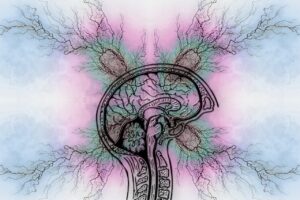Harnessing technology to tackle the challenges of assessing pain in people with dementia
In the UK, research shows dementia affects around 850,000 people. Following this, more than 70% of residents in the UK’s 18,000 care homes have some form of dementia, and it is thought that 50% of those living with dementia have undetected or untreated pain.
Assessing pain in people living with dementia can be a challenging task, as they may not be able to accurately communicate their discomfort due to cognitive and communication impairments. This poses various challenges to caregivers in ensuring reliable pain assessment outputs that remain consistent, regardless of the assessor.
In recognition of Dementia Action Week 2023, Tandeep Gill of PainChek highlights some of the challenges involved in assessing pain among individuals living with cognitive impairments, including dementia, and explains how digital technology can be utilised to combat these issues.
Key challenges
People with dementia may experience communication difficulties that vary depending on the severity of their condition, meaning it can be difficult to inform caregivers of their location, intensity, or quality of their pain. They may also have difficulty remembering when their pain started, how it began, and how long they have been experiencing it.
In addition, dementia can also affect a person’s ability to understand and respond to questions, which can make it difficult for healthcare providers to assess pain. Likewise, people with dementia may have difficulty recognising and interpreting pain-related cues and may not be able to express their pain in a way that healthcare providers can understand. This can also cause other distress response behaviours which may be inappropriately perceived as being a symptom of dementia itself, rather than a means of communicating their discomfort.
People with dementia may exhibit behavioural and psychological symptoms, such as agitation, restlessness, or aggression, which can be associated with pain. However, these symptoms can also be caused by other factors, such as environmental or social triggers, which can make it difficult to determine whether the pain is the underlying cause. It is therefore important to determine whether or not pain is present when these behaviours are observed to ascertain the most appropriate care pathway for that individual.
Family members or caregivers may report on behalf of the person with dementia, but their reports may not always be accurate due to their own biases or misunderstandings of the agony people are facing. This issue is also exacerbated when there is a high turnover of staff, or a resident is being cared for by multiple caregivers at any one time.

Moreover, due to the challenges involved in assessing discomfort, people with dementia may be at risk of under-treatment, which can have negative impacts on their quality of life and overall health. Conversely, a person living with dementia is also vulnerable to being overprescribed or inappropriately prescribed medications such as antipsychotics or benzodiazepines which may not be required and are a by-product of ineffective pain assessments.
Enhancing pain assessment with technology
To overcome these challenges, healthcare providers may use a combination of tools and techniques, such as observational pain scales, behavioural assessments, and pain diaries, to better understand and manage pain in people with dementia. Additionally, involving family members and caregivers in the assessment process can provide valuable insights into the person’s pain experience and improve the accuracy of reporting it.
As the global population of ageing people grows, as does the need for aged care, putting increasing pressure on the elderly care sector as a whole. In many countries, there is a shortage of skilled carers, making recruitment and retention a challenge, as well as making it difficult for care providers to deliver consistent, high-quality care.
Digital tools and solutions developed to support carers and the people they care for have a transformative impact on the social care workforce. Technology can lift many administrative burdens from care staff, in turn driving efficiencies and productivity, improving job satisfaction, and giving carers back the time to interact with residents.
One digital tool that is doing just that is PainChek® – a medical device and software application designed to assess and monitor pain levels in people who are unable to communicate their pain effectively. It uses artificial intelligence (AI) and facial recognition technology to detect and quantify pain in real-time by analysing micro facial expressions which indicate pain.
The PainChek® app is used on a mobile device, such as a tablet or smartphone, and is intended to be used by healthcare professionals, caregivers, and family members to assess pain in people with communication difficulties, such as those with dementia, intellectual disabilities, or non-verbal individuals. The app provides a pain score and alerts healthcare professionals to potential pain-related issues, enabling them to take appropriate action.
PainChek® has been validated in clinical studies and is approved for use in several countries, including Australia, the UK, and parts of Europe. It has received various awards and recognitions for its innovative use of technology in the assessment and management of pain.
Dementia Awareness Week began on Monday and lasts until 21st May. The event is Alzheimer’s Society’s biggest and longest running awareness campaign and each year they work with individuals and organisations across the UK to encourage people to ‘act on dementia’.
Images: Danie Franco and Jeremy Wong
















